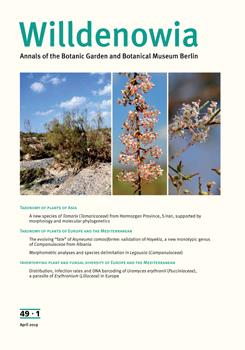This paper presents the European distribution of the understudied, host-specific rust fungus, Uromyces erythronii (Pucciniomycetes, Pucciniales, Pucciniaceae). Distribution data were derived from the survey of herbarium materials of its European host plant, Erythronium dens-canis. We demonstrate the presence of this rust fungus in 14 countries within the distribution area of its host. The temporal trend of emergence of the two rust fungus generations (aecia and telia) is presented. Based on the study of 1700 E. dens-canis individuals, we conclude that the overall infection rate has not changed significantly over the last 200 years. During field surveys, U. erythronii infection was detectable in most of the studied Erythronium populations (88.5%). A high similarity in the nrITS region was detected among samples from Europe (Croatia, Romania) and Asia (Japan).
Citation: Nagy T., Pfliegler W. P., Takács A., Tökölyi J. & Molnár V. A. 2019: Distribution, infection rates and DNA barcoding of Uromyces erythronii (Pucciniaceae), a parasite of Erythronium (Liliaceae) in Europe. – Willdenowia 49: 13–20. doi: https://doi.org/10.3372/wi.49.49103
Version of record first published online on 14 March 2019 ahead of inclusion in April 2019 issue.





